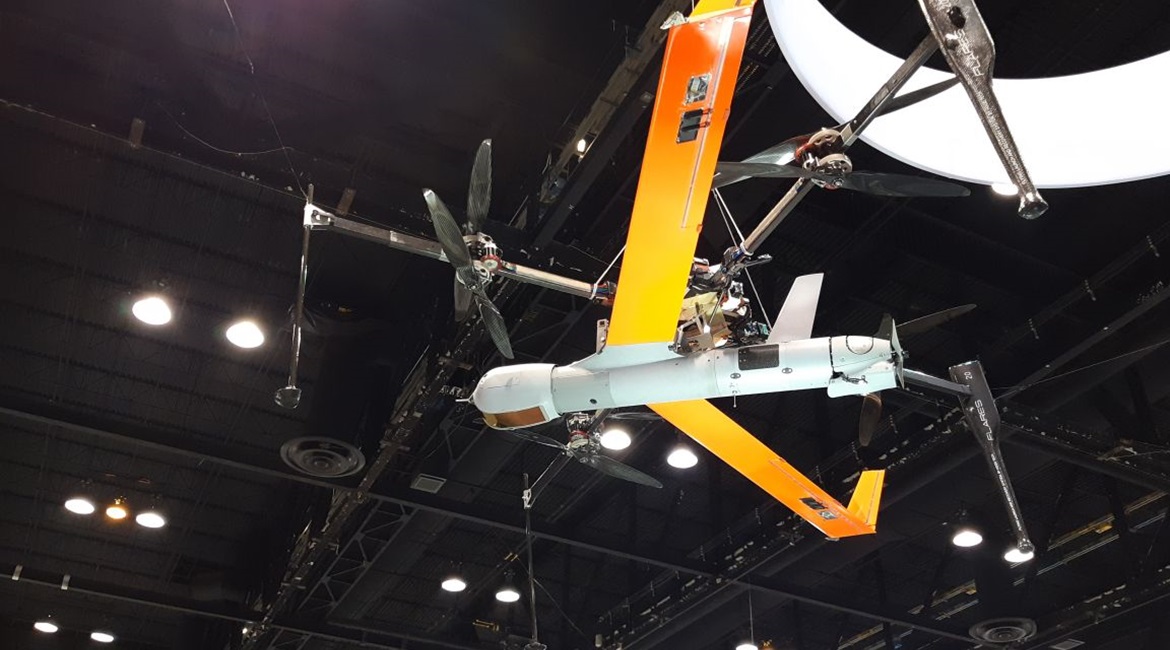
Hood Tech Mechanical has developed a flying launch and recovery system (FLARES) that uses a vertical takeoff and landing (VTOL) quadcopter unmanned aerial vehicle (UAV) to launch and recover fixed-wing UAVs weighing roughly 13–40 kg.
Cory Roeseler, company engineer, told Jane’s on 1 May that FLARES uses a wing root gripper, similar to how a falcon or an eagle catches a fish, for example, to attach to the fixed-wing UAV. FLARES then rises off the ground, an operator waits for the fixed-wing UAV to activate its autopilot and have its engine achieve full revolutions per minute (RPM), before an operator commands FLARES to release the fixed-wing UAV and allowing it to take flight.

Hood Tech Mechanical developed a quadcopter UAV flying launch and recovery system (FLARES) to launch ScanEagle-sized UAVs. The company believes the smaller footprint compared with a traditional catapult launcher can benefit militaries in expeditionary environments. (IHS Markit/Pat Host)
In all, the typical launch sequence takes four minutes. FLARES recovers the fixed-wing aircraft similar to a skyhook in that it rises from the ground, raising a rope. The fixed-wing aircraft then flies into the rope, hooking the rope with a hook on one of its wings before falling to the ground.
Roeseler said militaries can benefit from FLARES thanks to its small footprint compared with traditional catapult launchers. FLARES and a fixed-wing UAV share space the size of a pickup truck’s bed. This allows a fixed-wing UAV to be deployed in an expeditionary environment or from ships.
Providing a VTOL launch and recovery capability eliminates the weight and drag penalty on a UAV for long endurance missions by eliminating the battery and mechanical weight that rotors carry on fixed-wing aircraft. Roeseler said this enables a customer to use better payloads.
Looking to read the full article?
Gain unlimited access to Janes news and more...






